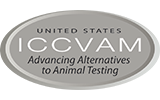Predictive Toxicology of the Retinoid Signaling Pathway
The developing child is vulnerable to genetic, pharmacological, or chemical disruption of the retinoid biochemical pathway, especially during early growth and differentiation of embryonic tissues. Susceptibility of this pathway to chemical disruption is an important regulatory concern for developmental and reproductive hazard identification. In this study, which involves all four Tox21 participating offices, Tox21 data are being mined and modeled to identify potential retinoid pathway disruptors. Results from a dozen Tox21 molecular targets mapping to retinoid pathway targets identified over 100 structurally diverse chemicals with relevant bioactivity. Computational tools and approaches are now being built to integrate these data with embryological knowledge and construct data-driven models for developmental hazard prediction. For example, a computational model that linked chemical disruption of the retinoic acid signaling pathway with fetal skeletal defects has been aligned with a provisional AOP framework for craniofacial, vertebral, and/or appendicular phenotypes (Knudsen et al. 2021; Pierro et al. submitted). Papers in preparation related to this project describe the use of these data as input for IVIVE models to predict relevant exposure levels and to develop candidate reference chemicals for in vitro retinoid pathway assays. Participants in the project contributed to a “Detailed Review Paper on the Retinoid System” issued by OECD in 2021, and described findings in a poster presented at the 2021 annual meeting of the Society of Toxicology (Pierro et al.), a platform presentation at the 2021 annual meeting of the Society for Birth Defects Research and Prevention (Pierro et al.), and a workshop session at the 11th World Congress on Alternatives and Animal Use in the Life Sciences (Knudsen et al. 2021).



